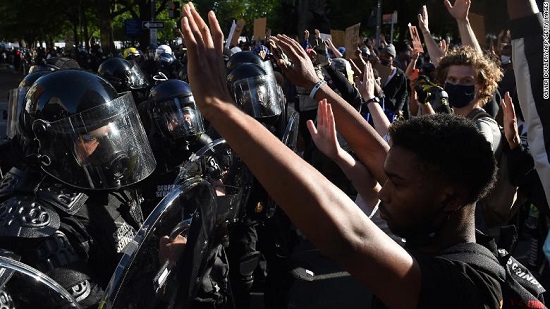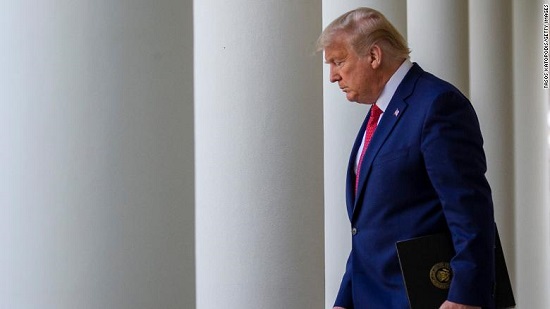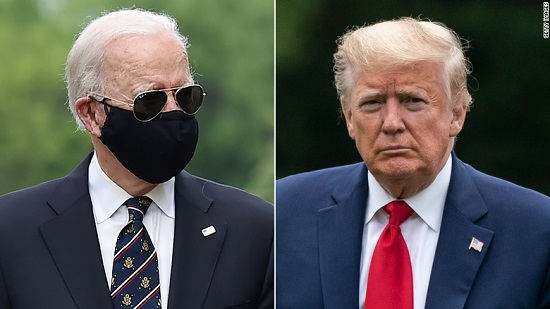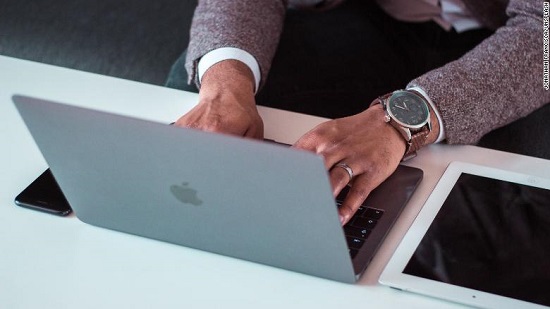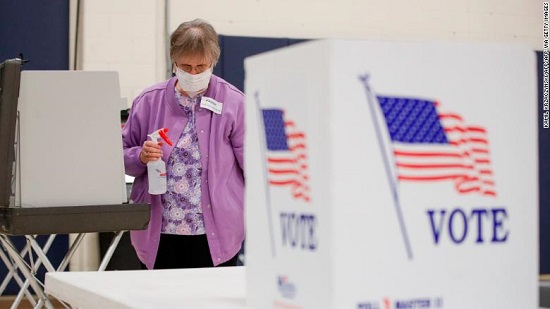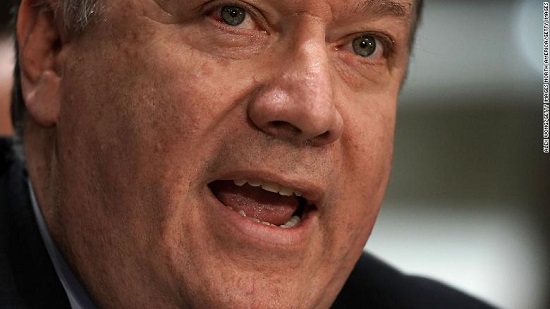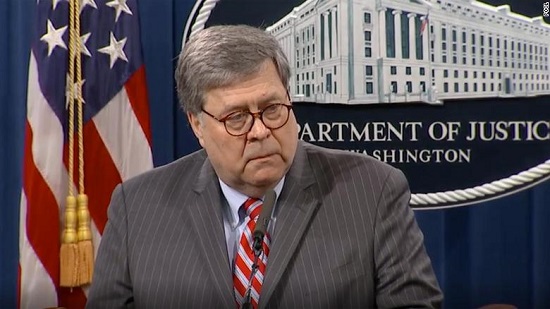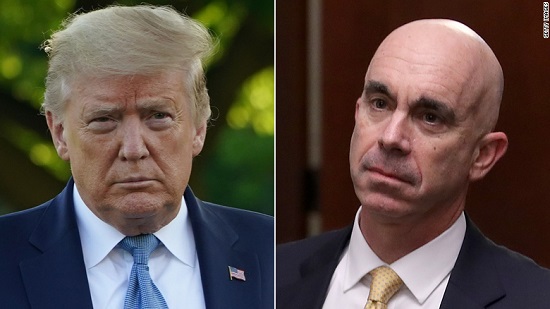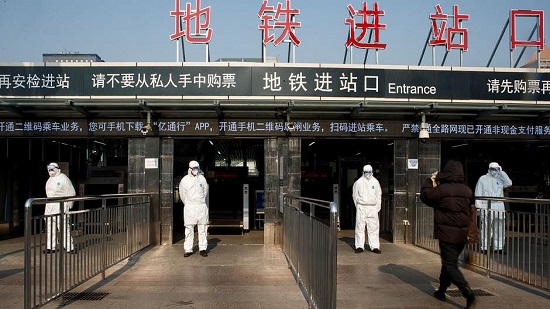If Americans believe in freedom from lockdown they should start here
Jorge Garcia Curbelo and Danilo Ochoa Jomarrón always imagined coming to the United States to get married and live happily ever after as an openly gay couple. They never imagined that they would be separated at the border -- or worse yet, unable to see one another for more than a year as a deadly pandemic raged across the globe.
"We had a beautiful relationship in Cuba, but we were always afraid of being caught by the police and had to be cautious because of the government," Curbelo told me when sharing some of the reasons that pushed them to leave their country.
While homosexuality is technically legal in Cuba, there is still a pervading sense of homophobia and discrimination against LGBT individuals, particularly outside of major cities. Jomarrón even says that he lost his job as an art teacher due to being "unfit" to work in a school -- a remnant of the Fidel Castro era that forbade homosexuals from working in the education sector but that was supposedly scrapped when laws came into force prohibiting this kind of workplace discrimination.
"We wanted to have a life that we couldn t have in Cuba, where we could get married and live freely," Curbelo continued.
But when Curbelo and Jomarrón arrived at the US-Mexico border a little more than one year ago in hopes of escaping this kind of persecution, US Border Patrol officers split them up, sending Curbelo to an immigration detention facility in Pennsylvania and Jomarrón to one in Georgia. It was a far cry from the freedom that they had bargained for -- and the beginning of a very long separation.
"We told them that we re a couple," Curbelo continued, recalling the moment that they were separated. However, as with other LGBT couples before them, this did little to convince the border officers that they should be able to stay together.
Americans across the country are now working to lift the so-called lockdown, a bid for freedom from restrictions imposed by the Covid-19 pandemic. But if they truly believe in freedom for all, they should turn their attention to the refugees and asylum-seekers, like Curbelo and Jomarrón, who are sent to immigration detention facilities and spend their lives under lockdown for far too long.
Over the past two months, most Americans have gotten a small taste of what it feels like to be unable to see their loved ones, part of a "new normal" that has replaced visits with video calls, as the country struggles to contain the Covid-19 pandemic. But for anyone navigating the rules of the Immigration and Customs Enforcement (ICE) agency, many aspects of this "new normal" have been a part of life since long before the pandemic. US citizens and legal residents can only visit detained loved ones during certain visitation hours, and in some facilities only through plexiglass or over video -- even if they were in the same room. It isn t "social distancing." It is just the rules. Since the coronavirus crisis began, ICE has suspended all social visitations.
For refugees and asylum-seekers, trying to keep track of a loved one in the system can be even more challenging. Often, they are separated with no way to contact another detainee for months at a time. For many, it is a price they are willing to pay for the hope of someday getting to be together. However, this hope seems further and further away as the Covid-19 pandemic rages both outside and inside detention facilities, making many couples wonder what will happen if one of them gets sick and is deported -- or dies -- before they have a chance to say goodbye.
Separation, before and after Covid-19
"We would call my family members to learn about each other," Curbelo continues, explaining how he and Jomarrón got news about each other while they were both in detention.
"We could call people on the outside, but not other detainees," he explains, describing how guards limited his and Jomarrón s ability to communicate. "They wouldn t allow three-way calls, either."
A few months later, Curbelo won his asylum case. However, when Jomarrón presented the same evidence -- both of their asylum claims were largely based on their relationship, after all -- he was denied. It is an example of the vast difference in asylum success rates from one state to another.
"Jorge s case was so strong, that he was able to get asylum, even pro se," said Tahirih Justice Center supervising staff attorney Shelly Anand, referring to the fact that Curbelo, like many asylum-seekers, didn t have legal representation.
Since Jomarrón s asylum was refused, the Tahirih Justice Center has stepped in to provide pro-bono legal support.
"His case is parallel to our client (Jomarrón) -- so this says a lot about the jurisdiction that we re working in," she continued, referring to the low success rates in Georgia. According to Syracuse University s TRAC Immigration project, 33% of asylum-seekers in Pennsylvania were granted asylum in 2019. In Georgia, this dropped to only 5%.
For the young couple, it was a nightmare.
"It is a terrible feeling," said Curbelo. "I got asylum and he didn t, all because of the opinion of one judge."
As soon as he could, Curbelo traveled to Georgia to visit Jomarrón and get married -- even though a wedding in an ICE detention facility was not the wedding that either of them had imagined for themselves. But if it would help them be able to reunite -- and perhaps have a real wedding someday -- it was worth it.
"I don t remember it that well, honestly," he says, describing the anticlimactic experience of getting married in the detention center.
"The county judge refused to do the wedding," he continued. "No one from ICE was interested in the ceremony, so it was just the lawyers, a notary, him and me."
It was the first time that Curbelo and Jomarrón had been able to see each other since coming to the United States. Curbelo had to go back to Missouri, where he is staying with family members and had just gotten a job working in a factory. He had no vacation days and needed the money. Then, the pandemic struck.
No one was wearing protection
It immediately became clear to Curbelo how easily Jomarrón could catch the deadly disease.
"No one was wearing protection," Jomarrón said, recounting what it was like to be in a detention facility as the Covid-19 raged both on. "No one had masks, or gloves or anything," Jomarrón continued, speaking to his experiences.
According to the ICE website, all facilities are using personal protective equipment (PPE) in line with the US Centers for Disease Control and Prevention s guidelines. However, this doesn t match testimonies similar to Jomarrón s that detention centers across the country are also not requiring guards or detainees to wear masks, and generally make social distancing impossible.
"The conditions in detention centers were terrible before the coronavirus," Anand elaborated, speaking to how ICE s overcrowding problem has only fueled the spread of the pandemic. "Now, they re even worse."
Last week, Jomarrón was released. The Tahirih Justice Center was able to argue that his preexisting medical conditions made him more vulnerable to Covid-19, which made him eligible for humanitarian parole. He is one of more than 900 low-risk detainees that ICE has released in response to overcrowding concerns in light of the pandemic.
Still, this has done little to contain the pandemic for the thousands who remain detained. As of last week, according to ICE, more than 1,200 ICE detainees have tested positive for the virus.
"It is impossible to stay healthy in these conditions," Curbelo said, speaking to his own experience spending three months in ICE detention before the pandemic.
"I was afraid of him getting sick; he was afraid of me getting sick," he continued, describing what it is like to not only be separated by the US immigration system, but then separated by the system amidst a pandemic.
"He was afraid we might never see each other again."
The Trump Factor
Now, Curbelo and Jomarrón are finally able to reunite for the first time since they got married, though their future together still depends on Jomarrón winning his asylum case. However, with new regulations from the pandemic, hopeful asylum-seekers like them might not even be able to make it across the border.
As President Donald Trump extends border closures and travel restrictions to contain the pandemic, the US asylum system has ground to a halt. Meanwhile, US Citizenship and Immigration Services agency is facing a significant funding shortfall, largely because it isn t processing any paperwork and has lost income from the application fees. And, so far, the government has not offered to bail it out.
Some have remarked that the Covid-19 pandemic provides the perfect scapegoat for the Trump administration to complete its full-scale assault on the US asylum system, including but not limited to the "zero tolerance" policy that once separated young children from their parents at the border and the so-called "remain in Mexico" policy that currently forces asylum-seekers to wait in Mexico until their cases are heard.
However, Covid-19 has not put an end to the violence, war and persecution that is pushing people like Curbelo and Jomarrón to come to the United States in the first place.
"You still have thousands of people waiting to access the process," said Al Otro Lado refugee program director Nicole Ramos, describing one effect of the pandemic on the Mexican side of the border.
According to Ramos, many of the asylum-seekers who have been waiting for their court date for months under the Trump administration s "remain in Mexico" policy are now being told that processing has completely stopped. The Department of Homeland Security says hearings have been suspended through June 8. Many have nowhere else to go and are now living in growing tent cities along the border -- which, like other refugee camps, make the spread of the virus almost inevitable.
"It is prime for the spread of the pandemic," Ramos continued. "Now, there is a health crisis within a health crisis because of this attempt to destroy the asylum process."
It is only a matter of time before the Covid-19 lockdown is fully lifted. But if left unchecked, the lockdown on refugees and asylum-seekers will extinguish the hope of those who immigrate to the United States to live a life in freedom for years to come.








